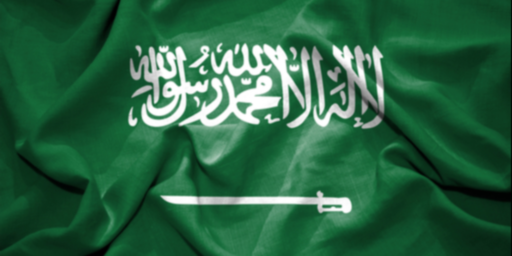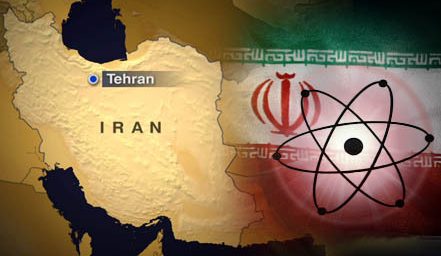Report Finds No Evidence Syria Hid Iraqi Arms
Report Finds No Evidence Syria Hid Iraqi Arms (WaPo, A1)
U.S. investigators hunting for weapons of mass destruction in Iraq have found no evidence that such material was moved to Syria for safekeeping before the war, according to a final report of the investigation released yesterday. Although Syria helped Iraq evade U.N.-imposed sanctions by shipping military and other products across its borders, the investigators “found no senior policy, program, or intelligence officials who admitted any direct knowledge of such movement of WMD.” Because of the insular nature of Saddam Hussein’s government, however, the investigators were “unable to rule out unofficial movement of limited WMD-related materials.”
The Iraq Survey Group’s main findings — that Hussein’s Iraq did not possess chemical and biological weapons and had only aspirations for a nuclear program — were made public in October in an interim report covering nearly 1,000 pages. Yesterday’s final report, published on the Government Printing Office’s Web site ( http:www.gpo.gov/ ), incorporated those pages with minor editing and included 92 pages of addenda that tied up loose ends on Syria and other topics.
U.S. officials have held out the possibility that Syria worked in tandem with Hussein’s regime to hide weapons before the U.S.-led invasion. The survey group said it followed up on reports that a Syrian security officer had discussed collaboration with Iraq on weapons, but it was unable to complete that investigation. But Iraqi officials whom the group was able to interview “uniformly denied any knowledge of residual WMD that could have been secreted to Syria,” the report said.
The report, which refuted many of the administration’s principal arguments for going to war in Iraq, marked an official end of a two-year weapons hunt led most recently by former U.N. weapons inspector Charles A. Duelfer. The team found that the 1991 Persian Gulf War and subsequent U.N. sanctions had destroyed Iraq’s illicit weapons capabilities and that, for the most part, Hussein had not tried to rebuild them. Iraq’s ability to produce nuclear arms, which the administration asserted was a grave and gathering threat that required an immediate military response, had “progressively decayed” since 1991. Investigators found no evidence of “concerted efforts to restart the program.”
While finding no evidence for something is not the same is proof that it’s untrue, one would think the evidence would have turned up given the extensive access our investigators have had. There’s no question that Saddam had WMD stockpiles and a nuclear program well into the 1990s and maintained nuclear ambitions until the end. While our forces have discovered small numbers of chemical weapons, nothing like the amounts unaccounted for have been found.
Saddam had the duty to account for the whereabouts of these weapons and components as per the Desert Storm cease-fire and numerous UN Security Council resolutions and failed to live up to that responsibility. Still, it would be nice to know where the missing materials are.





“Still, it would be nice to know where the missing materials are. ”
I would assume that premise is based on the assumption that Saddam had something to hide in the first place. As time goes on, it’s becoming more widely accepted that we were probably wrong about that assumption.
.. and what WAS thta line of trucks headed for Syria just before the war, carrying, I wonder?
We wonders, yes, we wonders, precious.
.. and what WAS that line of trucks headed for Syria just before the war, carrying, I wonder?
Pumpkins. Musta been pumpkins.
Dr Joyner wrote: There’s no question that Saddam had WMD stockpiles and a nuclear program well into the 1990s and maintained nuclear ambitions until the end.
That is a myth. The full ISG report certainly raises some questions about that assertion. Just read the Key Findings.
From page 13 of the report:
“A few unique points in time shaped Saddam’s perspectives regarding WMD after the 1991 Gulf war. However, it must be stated that Saddam’s experience with WMD
previously had been very positive. Senior Iraqis have said that it was their fi rm conviction that the use of ballistic missiles and chemical munitions saved them in the war against Iran. Missiles allowed them to hit Iranian cities, and chemical munitions (101,000 were used) countered the Iranian “human wave†attacks. In addition, the Iraqis believed that their possession and willingness to use WMD (CW and BW) contributed substantially to deterring the United States from going to Baghdad in 1991. WMD demonstrated its worth to Saddam. Moreover, senior Iraqis have observed that, if Saddam had waited until he fi nished his nuclear weapon before invading Kuwait, the outcome would have been much different.
Therefore, it was a tough decision he faced when confronted by the UN resolution linking lifting the of sanctions with WMD disarmament. Ultimately, his top priority (after survival) was to get out of the UN constraints. That priority underlies the actions of the Regime during the past 13 years. This may seem obvious but is easily forgotten. The spring and summer of 1991 were defi ning moments for Baghdad on this point. During the fi rst few inspections (June-July 1991), it became clear that the inspectors were more serious and intrusive than Baghdad expected of the United Nations. Baghdad was still surrounded by a huge array of military force that was fully capable of invading. Baghdad nevertheless initially chose to conceal WMD capabilities with a goal of preserving future WMD options. Indeed, Iraq used CW against Shia within its own borders just two months earlier. Baghdad was found blatantly cheating. The immediate consequence during this period was that
the UN Security Council, including the United States, did not restart the recently ended conflict but did pass a new resolution on 15 August 1991 (UNSCR 707) demanding more access and more intrusive rights for UN inspectors. The message was thus mixed. The UN Security Council could agree on demands but not on enforcement. What was the impression received by Saddam?
He was clearly refusing cooperation with the UN resolutions. Saddam crushed internal dissent, including the use of chemical weapons, just as he did in the late 1980s. Yet, military force was not used against him. However, more intrusive legal strictures were imposed. Saddam identified the envelope of limits around him. The Regime continued to mix compliance with defi ance. It now appears clear that Saddam, despite internal reluctance, particularly on the part of the head of Iraq’s military industries, Husayn Kamil, resolved to eliminate the existing stocks of WMD weapons during the course of the summer of 1991 in support of the prime objective of getting rid of sanctions. The goal was to do enough to be able to argue that they had complied with UN requirements. Some production capacity that Baghdad thought could be passed off as serving a civilian function was retained, and no admission of biological weapons was made at all. But the clear prime theme of Saddam was to defeat the UN constraints. Dispensing with WMD was a tactical retreat in his ongoing struggle.
From the evidence available through the actions and statements of a range of Iraqis, it seems clear that the guiding theme for WMD was to sustain the intellectual capacity achieved over so many years at such a great cost and to be in a position to produce again with as short a lead time as possible—within the vital constraint that no action should threaten the prime objective of ending international sanctions and constraints.
Saddam continued to see the utility of WMD. He explained that he purposely gave an ambiguous impression about possession as a deterrent to Iran. He gave explicit direction to maintain the intellectual capabilities. As UN sanctions eroded there was a concomitant expansion of activities that could support full WMD reactivation. He directed that ballistic missile work continue that would support long-range missile development. Virtually no senior Iraq; believed that Saddam had forsaken WMD forever. Evidence suggests that, as resources became available and the constraints of sanctions decayed, there was a direct expansion of activity that would have the effect of supporting future WMD reconstitution.
Yet, Saddam was not willing to give up sovereignty and security in an immediate gamble that the UN Security Council would lift sanctions. Bearing in mind that at this very time, Saddam was in a hugely weakened state domestically, still acting with defi ance by retaining some capacity and, at that time, refusing to accept certain UN resolutions, most notably UNSCR 707 and 715, which demanded that Iraq accept a system of monitoring to detect a reconstitution of Iraqi WMD programs. This Saddam flat out refused as an invasion of his sovereignty that would be permanent, not temporary.”
If Saddam didn’t possess WMDs why didn’t he request to have the sanctions lifted?
This report is nothing more than a UN plot to make Baredai and Blix look good.
If anything, it is clear from the Iraq Survey Group that the US would have risked annihilation had we not invaded.